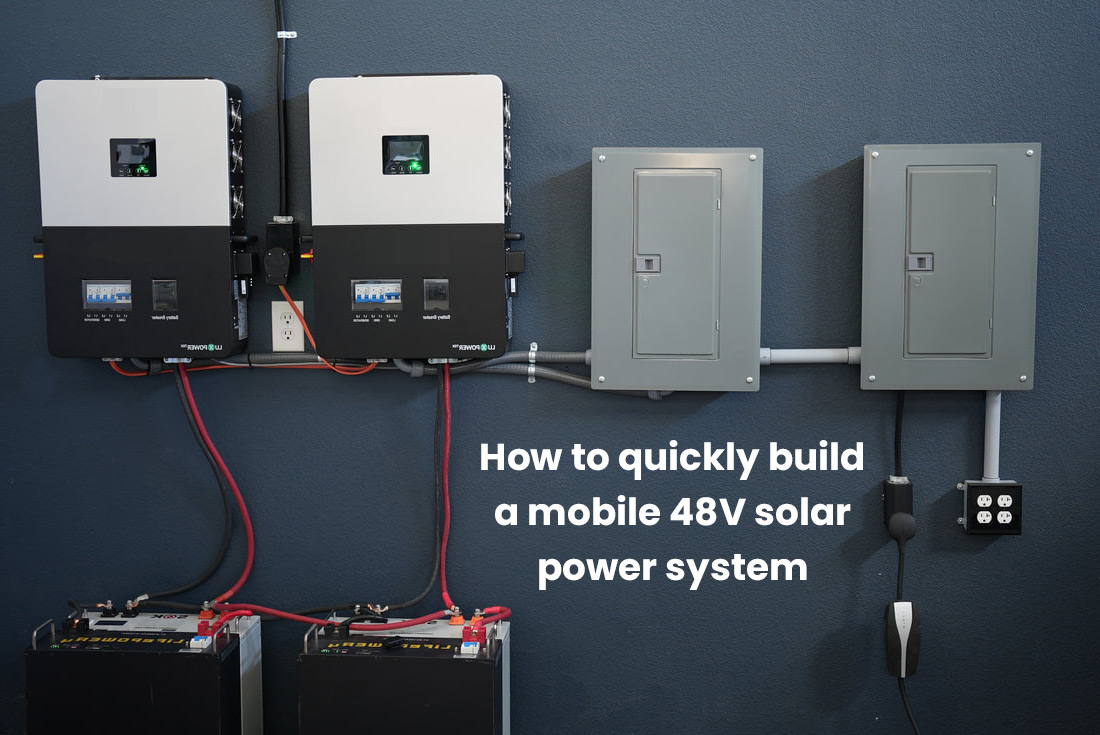Are you tired of being dependent on the grid for your energy needs? Are you looking for a sustainable and cost-effective way to power your home? Look no further than solar batteries! Solar batteries can store excess energy generated by solar panels, allowing you to use it later when needed. They are becoming increasingly popular among homeowners as they provide an eco-friendly alternative to traditional power sources. In this blog post, we will guide you through everything you need to know about choosing the right solar battery for your home, from types and installation to maintenance and upkeep. So let’s dive in and discover how sustainable power is just a few steps away!

#post_seo_title
What are Solar Batteries?
Solar batteries are a key component of any off-grid or hybrid solar power system. They store excess energy generated by solar panels during the day, allowing homeowners to use it at night or during cloudy days when sunlight is scarce.
These batteries work by storing DC (direct current) electricity generated from the sun and converting it into AC (alternating current), which is what most appliances in your home run on. This ensures that you have access to clean, renewable energy sources even when there’s no sunlight available.
There are a variety of different types of solar batteries available on the market today, each with their own benefits and drawbacks. Some popular options include lithium-ion, lead-acid, flow-battery systems and saltwater batteries.
Using a solar battery can help reduce your reliance on traditional power sources while also saving you money in the long run – making them an excellent choice for anyone looking to live more sustainably!
Types of Solar Batteries
Types of Solar Batteries
When it comes to choosing the right solar battery for your home, there are several different types available. Each type has its own unique features and benefits, so it’s important to understand the differences before making a decision.
One common type of solar battery is lead-acid batteries, which have been used for decades in off-grid systems. These batteries are reliable and relatively low-cost but require regular maintenance to ensure optimal performance.
Lithium-ion batteries are becoming increasingly popular due to their high energy density and long lifespan. They also require minimal maintenance and can be charged quickly.
Flow batteries use electrolyte solutions that flow through electrochemical cells, allowing for flexible sizing and long cycle life. However, they tend to be more expensive than other types of batteries.
Saltwater batteries are a newer technology that uses non-toxic materials and has a longer lifespan than traditional lead-acid batteries. They’re also more affordable than lithium-ion options but may not offer as much power storage capacity.
Ultimately, the choice between these various types of solar batteries will depend on your specific needs and budget. It’s essential to do your research beforehand to determine which option is best suited for you!
How to Choose the Right Solar Battery
Choosing the right solar battery is crucial in ensuring that you get a reliable and efficient power supply for your home. Here are some important factors to consider when selecting a solar battery.
First, determine your energy needs. You need to know how much energy you consume per day, as this will help you decide on the size of the battery capacity that would suit your household needs. This can be calculated by reviewing past electricity bills or using an online calculator.
Secondly, check the depth of discharge (DoD) rating of each potential solar battery. The DoD refers to how much of a battery’s charge can be used before it needs recharging. Batteries with high DoD ratings tend to perform better and last longer than those with lower ratings.
Thirdly, compare different types of batteries available in terms of their performance, reliability and cost-effectiveness. Lithium-ion batteries are generally more expensive but provide higher efficiency and longer lifespan compared to lead-acid batteries.
Consider other features such as warranty periods offered by different manufacturers and compatibility with existing solar panels systems.
By considering these factors, you’ll be able to choose a reliable and durable solar battery system for your home while reducing your carbon footprint on the environment!
Solar Battery Pros and Cons
Solar batteries are a crucial part of any solar energy system. They store the excess electricity generated by your solar panels during the day for use at night or on cloudy days. However, like any technology, they come with their own set of pros and cons.
One major advantage of solar batteries is that they allow you to become more self-sufficient. With a fully charged battery, you can power your home even when there’s no sunlight available. This is especially important in areas prone to blackouts or frequent power outages.
Another advantage is that having a solar battery can potentially save you money in the long run. By storing excess energy instead of sending it back to the grid, you can make better use of your investment in solar panels.
On the other hand, one downside to using a solar battery is their high upfront cost. Batteries are often one of the most expensive components in a solar panel system and may not be financially feasible for some homeowners.
Additionally, depending on where you live and how much energy your household consumes, it may take several years before your savings offset this initial expense.
Another potential disadvantage is maintenance costs- while most modern batteries require minimal maintenance; however, they still need occasional check-ups and replacements which could add up over time.
Though despite their disadvantages Solar Batteries remain an essential component towards sustainable living as we move toward greener alternatives for our planet’s continued existence
How to Install a Solar Battery
Installing a solar battery is a great way to maximize the potential of your solar power system. Before you begin the installation process, make sure that you have all the necessary tools and equipment. You should also read through the manufacturer’s instructions carefully before starting.
The first step in installing a solar battery is to choose an appropriate location for it. The location should be well-ventilated and protected from extreme temperatures. It should also be easily accessible so that you can check on it regularly.
Once you have chosen a location, mount the battery securely using brackets or other mounting hardware provided by the manufacturer. Make sure that it is level and stable to prevent any accidents.
Next, connect your solar panels to your charge controller according to the manufacturer’s instructions. Then, connect your charge controller to your battery bank using appropriately sized cables.
Connect any additional components such as inverters or generators as needed and test your system thoroughly before relying on it for power.
Installing a solar battery requires careful planning and attention to detail but with proper preparation anyone can do it successfully!
Maintenance and Upkeep for Solar Batteries
Maintaining and ensuring the longevity of your solar batteries is essential for a sustainable power supply. Proper maintenance not only extends the life of your batteries, but it also keeps them running at optimal efficiency.
Regularly checking the battery’s charge level is crucial to keep you aware of its condition. During long periods of cloudy weather or low sunlight exposure, it’s important to regulate usage to avoid over-discharging and damaging the battery.
Cleaning the surface terminals regularly will help prevent corrosion that can impede proper charging capacity. You can use a mixture of baking soda and water to clean away any residue buildup.
Replacing old or damaged cables should be done as soon as possible. Worn-out cables may cause resistance in energy flow, resulting in decreased performance levels from your solar system.
Proper temperature control is vital for maintaining your battery health. Batteries operate best between 20°C and 25°C, so ensure they are installed in shaded areas where they won’t overheat on hot days or freeze during cold ones.
By following these simple maintenance tips, you’ll significantly extend the lifespan of your solar batteries while enjoying uninterrupted sustainable power supply for years to come!
Conclusion
After reading this article, it is clear that choosing the right solar battery for your home is a crucial decision. With the increasing demand for sustainable energy, investing in solar batteries can not only reduce your carbon footprint but also save you money on electricity bills.
When selecting a solar battery, consider factors such as capacity, warranty period, depth of discharge and efficiency to ensure you get the best value for your investment. Also keep in mind that maintenance and upkeep are key to prolonging the lifespan of your solar battery.
With all these considerations in mind, we hope this article has provided valuable insights into choosing and installing the perfect solar battery system for your home. By making an informed decision, you can enjoy uninterrupted power supply while contributing towards a cleaner environment.


